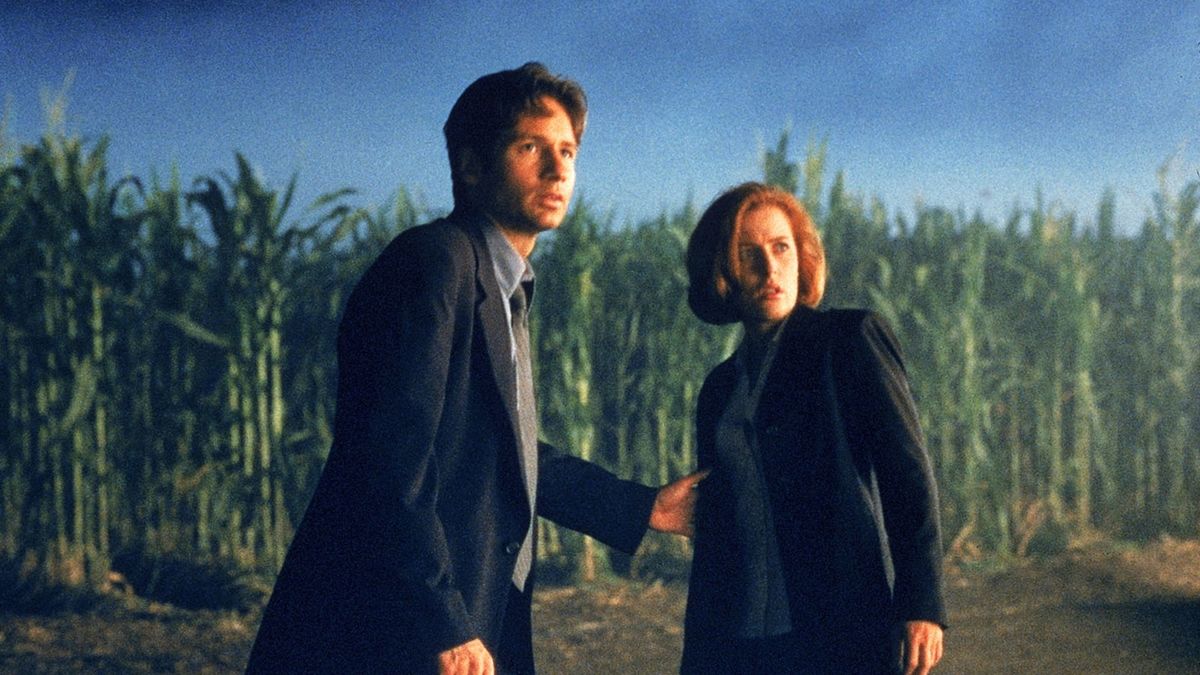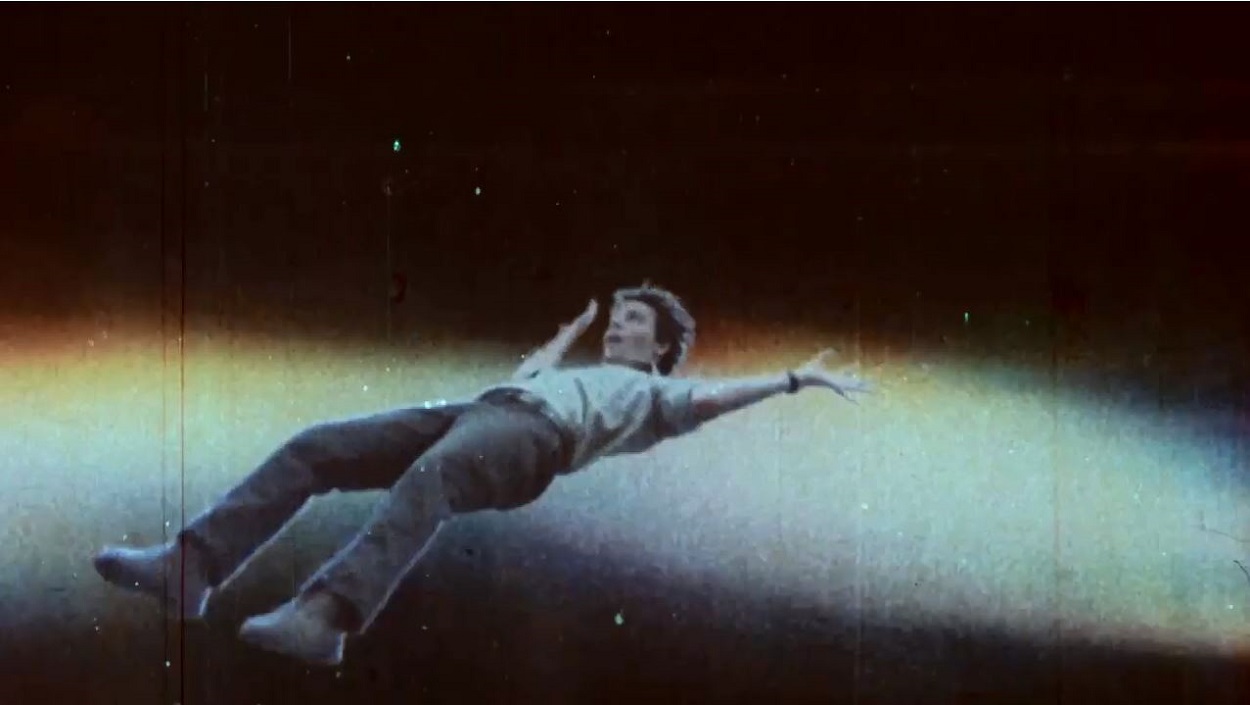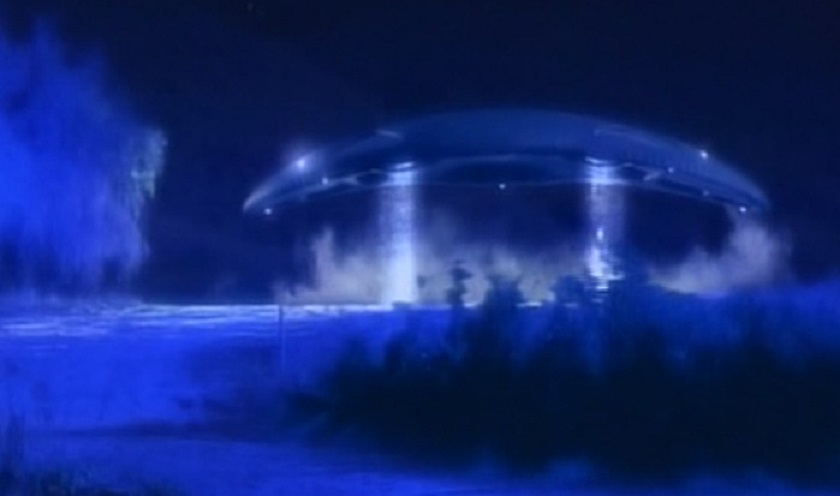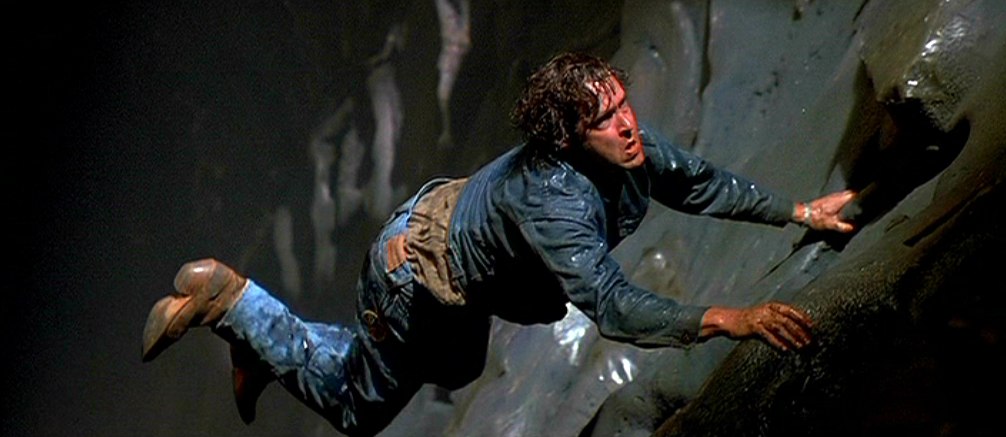6. The X-Files: Fight the Future (1998)

Running from 1993-2002 The X-Files was at the fore of the 90’s pop-cultural revival in extraterrestrial interest. Though UFOs were just one of the many paranormal and cryptozoological phenomena explored by the show’s grand tour of urban legend, UFOs remained central to its ongoing story or ‘myth-arc’ episodes, which told of alien conspiracy, and the secret infiltration of Earth’s governments by shapeshifters for the purpose of colonization, hybridization, and enslavement.
Essentially a long mid-season myth arc episode with some large scale cinematic set-pieces, X-Files: Fight the Future is also self-contained enough in its story of a UFO discovered in North Texas, its attempted cover-up, and subsequent investigation by FBI agents Mulder (David Duchovny) and Scully (Gillian Anderson) in conjunction with a domestic terror attack in Dallas, Texas to hold up as a standalone film to non viewers of the show.
Embodying the most paranoid of UFO theory, like the infiltration conspiracies of Bill Cooper and David Icke, and close in line with the non ET conspiracies of worldwide enslavement by conspirators of the Illuminati and New World Order. In many ways the aliens of the X-Files fit more closely this quasi-political model as described by Richard Hofstadter’s essay “The Paranoid Style in American Politics”, the all powerful, invincible corruptive force and enemy. And the X-Files here as elsewhere plays upon these paranoid political associations, taking from not only UFO mythology, but real world conspiracies like the Watergate scandal, and political thrillers of the 1970’s like The Parallax View (1974), Three Days of the Condor (1975) and All The President’s Men (1976).
7. Contact (1997)

Though far further science fiction than many of the other films on this list, Contact is a work of speculation by the great astronomer and popular scientist Carl Sagan, and grounded in his theories of spacefaring evolution and the science of real world SETI programs. The story follows Ellie (Jodie Foster), a SETI researcher whose team receives the first ever intelligent message from deep space and finds encoded instructions to the creation of a device of unknown function.
Director Robert Zemeckis (Back to The Future, Forrest Gump) makes a strong mainstream blockbuster of Sagan’s story, both as a survey of potential cultural-political reactions to alien contact, from disputes over the development device, and the jurisdiction of the project, to the paradigm shift it causes in human thinking, the worship and violence it inspires in radical fringes, and as an articulation of Sagan’s view of humanity’s place within the universe, and the larger processes of life, depicting an infinite regress of inter-civilizational cooperation and transmission that feels both symbolically potent and scientifically plausible, (something not at all unlike a rationalist exposition of Erich von Däniken’s ancient alien theory, or the monolithic cycle of 2001) while making no final claim to the identity of the prime mover – inviting a rare coexistence of scientific and religious values in contemplation of the cosmos.
While some of the CGI and art design appears dated today, too 1997 for its own good, the effects where they matter hold up, and the casting of Jodie Foster, Matthew McConaughey, William Fichtner, James Woods, and John Hurt are all excellent.
8. Foes (1977)

Coming out the same year as Close Encounters (and for that matter Star Wars) this low budget UFO thriller didn’t have much a chance of breaking out in 1977, but after a recent restoration by Garagehouse Pictures is being rediscovered by a new generation.
Foes is a super minimalist UFO thriller from one-time director and prolific VFX artist John Coats which gets the look and feel of craft practicals right – never feeling like a cheesy miniature, arguably outdoing Close Encounters in terms of believability – and nails some great psychedelic lightforms and barebones abduction sequences too.
Following the mid-air disappearance of an F-16 aircraft, air force operatives McCarey (Macdonald Carey) and Gen. Mason (Jerry Hardin, or The X-Files’ Deep Throat) track a UFO to the secluded Pershing island, on the East Coast of the United States, where a pair of lighthouse keepers Paul (Alan Blanchard) and Diane (Jane Wiley) – the island’s only inhabitants besides an offshore duo of divers (Gregory Clemens and John Coats) – stand witness to the alien craft hovering just off-shore, intentions unknown. As McCarey and Mason attempt to investigate they find a kind of EMP field enshrouding the craft’s perimeter that disables electronics and disallows any vehicular approach to the island, and the story becomes one of the islanders’ attempted escape.
Foes succeeds not only as an effects feat for director John Coats but also as a patient, slow-burning atmospheric horror which makes great use of the island’s natural beauty and isolation, and builds a mystery and tension through a drama of survival played out with minimal dialogue, scoring, or recourse to exposition.
9. Intruders (1992)

From horror director Dan Curtis, Intruders is another great made-for-TV UFO movie loosely based on Budd Hopkins’ non-fiction bestseller of the same name and follows psychologist Dr. Neil Chase’s (Richard Crenna) treatment of two separate patients, Mary Wilkes (Mare Winningham) and Lesley Hahn (Daphne Ashbrook) with troublingly similar stories of alien abduction, his coming to believe in the reality of these phenomena, and risking his career as a psychologist in the vocal and therapeutic support of these abductees.
For its 3-hour runtime Intruders is able to take its time building toward Chase’s story from a prologue of military-UFO encounter and through the individual backstories of Mary and Lesley.
A sober, well acted exploration of abduction as an identifiable psychiatric phenomenon, Intruders explores many of the popular aspects of abduction mythology – including experimentation, implants, and even impregnation – in a psychologically realistic and skeptical context, with a convincing emotional resonance.
10. Fire in the Sky (1993)

A modern classic of UFO film, Fire in the Sky from director Robert Lieberman is the dramatized true story of lumberjack Travis Walton’s November 5, 1975 abduction, as detailed in his 1993 book The Travis Walton Experience.
A great abduction film, the Walton story is explored as a fact-based procedural, recounting the night of Walton’s abduction (played here by D. B. Sweeney) when he was seemingly taken by a ship as he stopped to investigate a strange light above the woods outside Snowflake, Arizona, the legal and media reactions to Walton’s logging crew, led by Mike Rogers (Robert Patrick) who are upon reporting his abduction suspected of murder by some, and of perpetrating a hoax by others, including hardnosed police Lieutenant Frank Watters (James Garner), as well as Walton’s eventual reappearance, amnesiac and making wild claims of abduction and horrific experimentation at the hands of extraterrestrials.
Famous for one of the best and most horrific alien probe sequences out there Fire In The Sky’s climactic scene is a close-up on the grotesque and sadistic experimentation Walton claims to have undergone at the hands of the aliens and makes a greater use of body horror than almost anything else in the UFO film canon, and is worth watching for this last act alone.